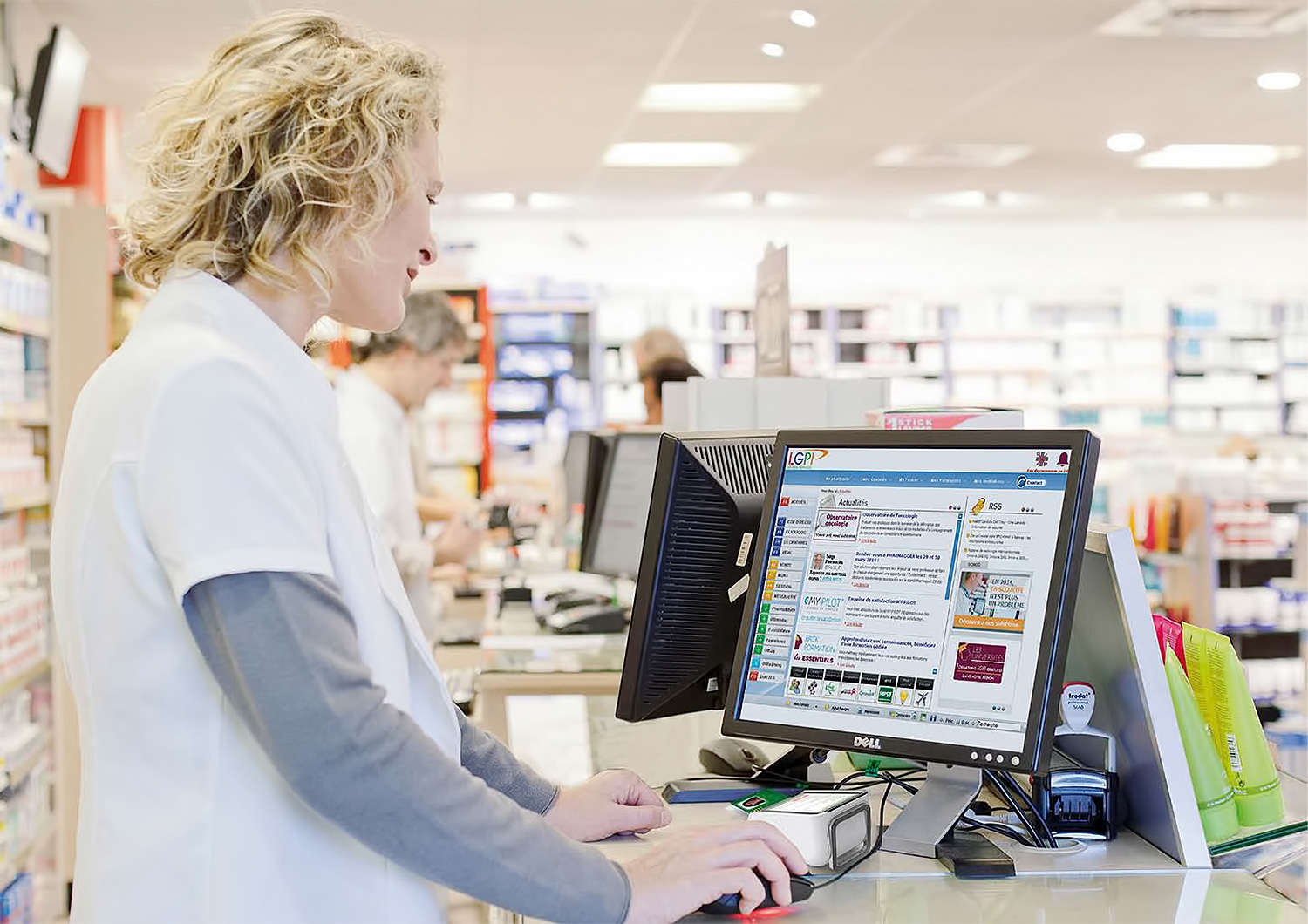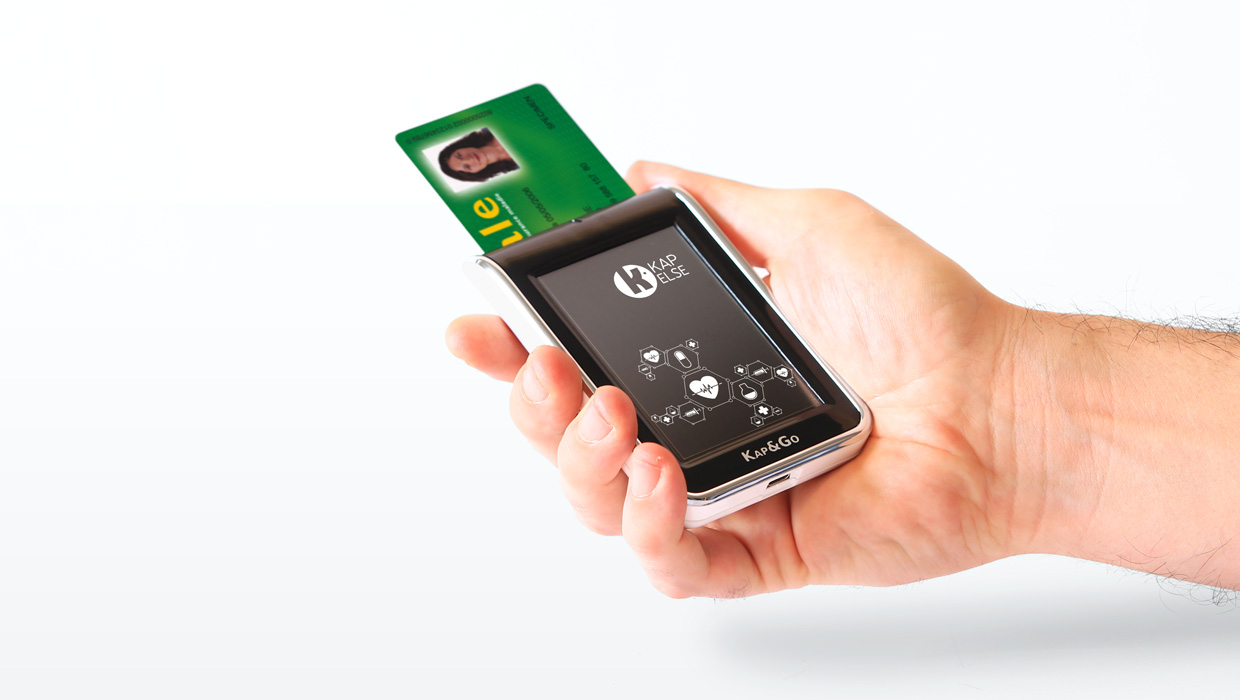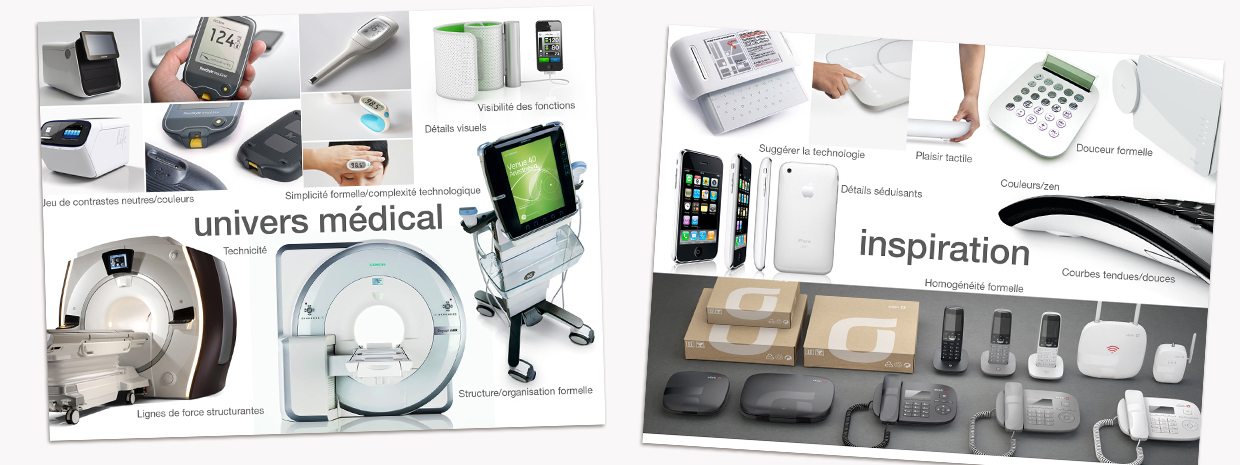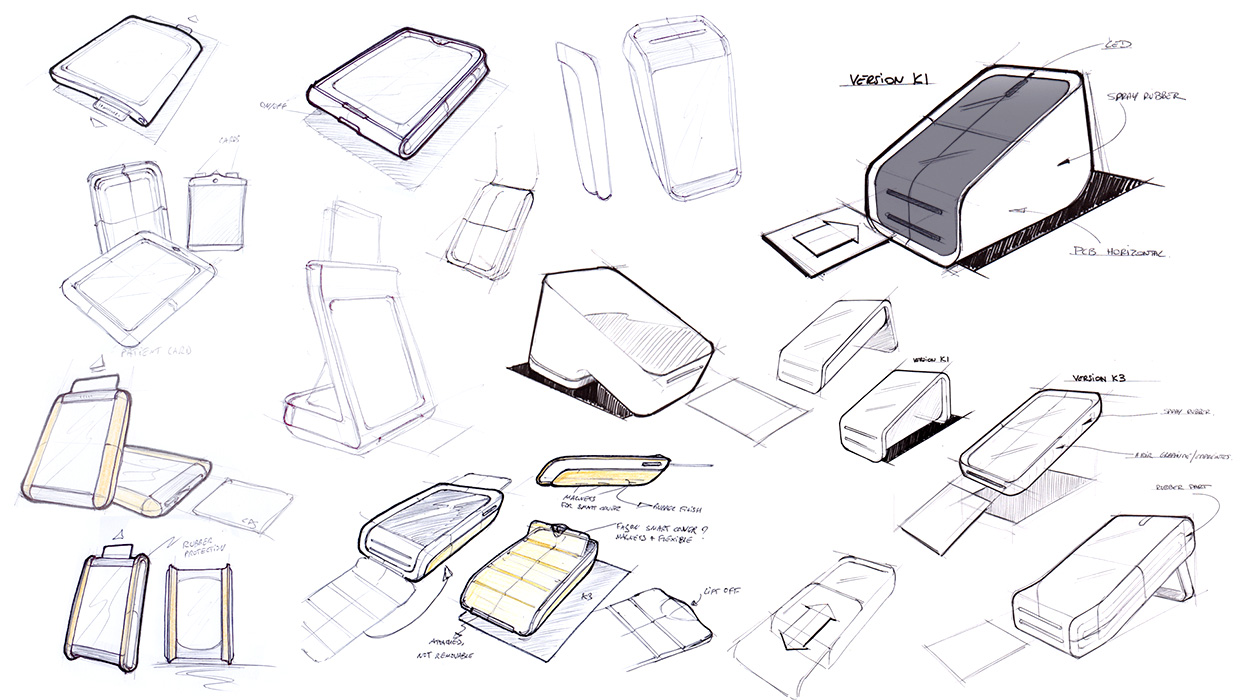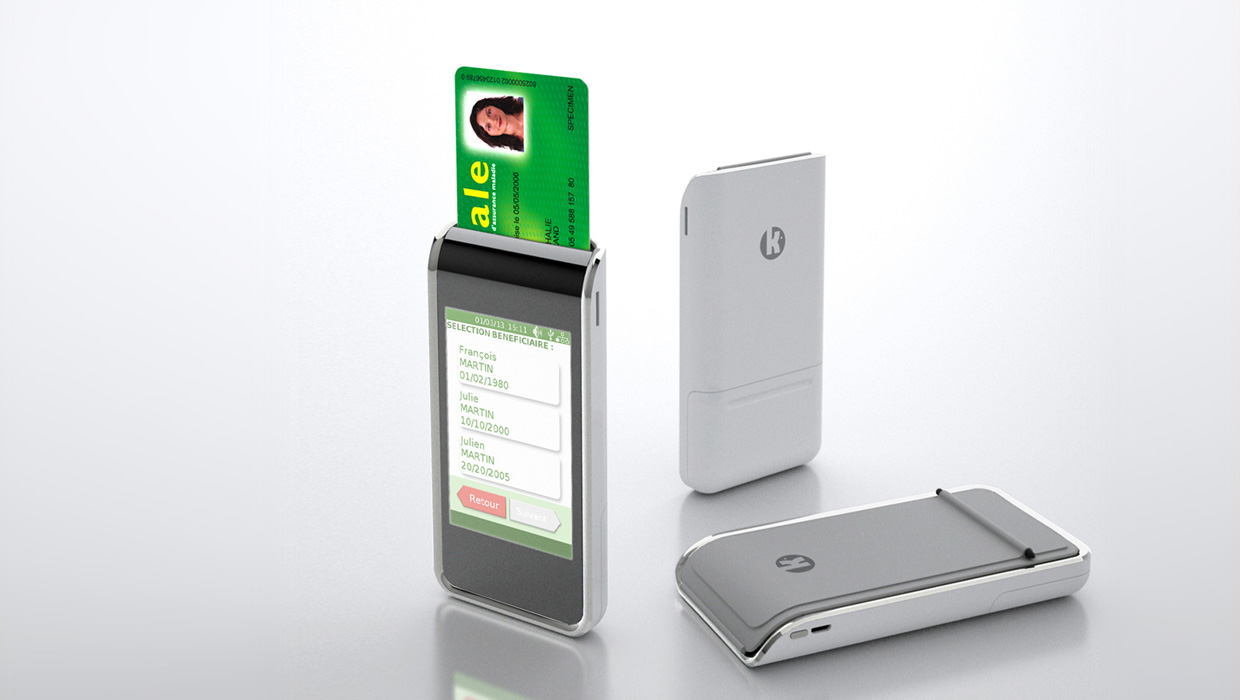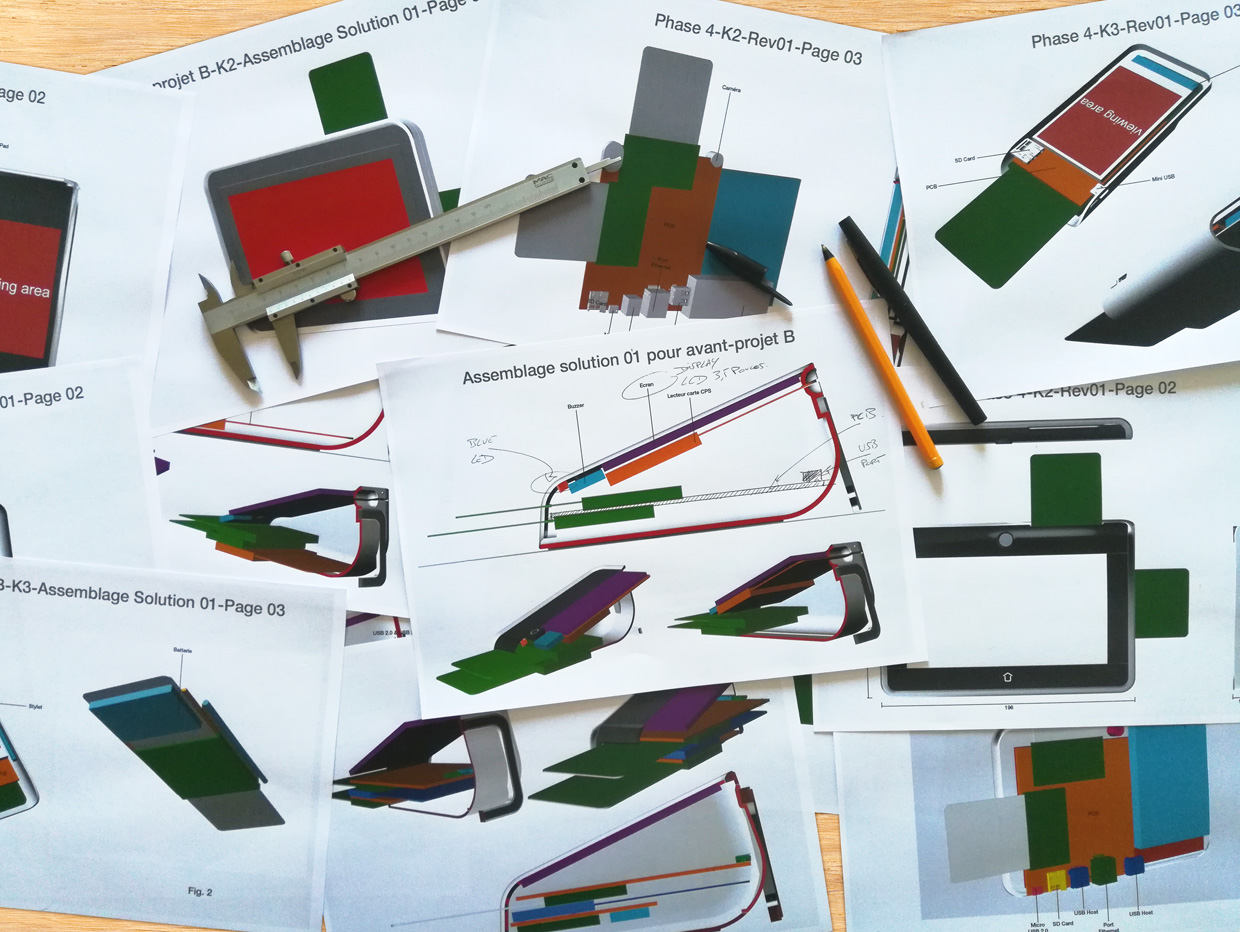Kapelse (Pharmagest group)
e‑health solutions K‑Line card reader range — innovation study
The objective of the study was to design three e‑health solutions, around the Carte Vitale (e‑health card) for professionals in the medical world. We worked firstly on the identity range, for a consistent design between different solutions, and secondly on the design of each of the product solutions within the constraints of use (fixed solution, mobile solution, on shelves solution).
The Carte Vitale is the national French health insurance card. It is used by doctors to prescribe drugs and keeping track of all patient’s medical records. Hospitals & Visiting nurses use the card as well for the same reasons. Pharmacists use it to check the prescriptions before delivering drugs. People use the card to show their health coverage, and pay only their tier, the health system paying the rest of the prescriptions.
Commercial results
It was the first product of Kapelse, on a very niche market (French hospitals, doctors, nurses, pharmacy) dominated by 2 major players. Kapelse came last and with the most expensive device on the market, but our design helped them to sell over 100 000 social card readers in 3 years!
We don’t usually get commercial results from our clients. But when we do, we like to share it with the world, as it is the best proof of the value of our work.
The K1 is a small Carte Vitale card reader expected to be placed on the counters of pharmacies, and doctors’ offices. The product can be used either vertically or horizontally, and integrates cable management system, thanks to the design of its foot. The K1 allows the user to place the Carte Vitale card in one of the two locations (any of the 2 slots). But the users can also put their private insurance card alongside the Carte Vitale system, a function that is not yet available in France, but which K‑Line range is already including.
The K3 is a portable version, to be used by visiting nurses, to allow them to save time in the establishment of different administrative records related to the care of their patients.
K2 is a Tablet for a double function:
-to provide information on drugs in pharmacies self-service,
-to optimize the healthcare experience of seniors, and allow them to be in communication with their doctors, remotely.
Backstage of the project
Market Analysis
The market of Carte Vitale readers does not show any design intent (style, ergonomics, family look for a range or products, trend…). Existing products are derived from pay stations. Overall, the style is sketchy, even stark. We noted a design attempt from Ingenico for the IWL model, which retains the structural elements of payment terminals (payment terminal keyboard, keys in rubber, colors…). There is no adaptation between payment terminals style to better fit the medical universe.
When we analyze the indirect competition, with payment terminals, some products show real design efforts to stand out from the competition and also to bring real products matching their primary function: payment by card. Some highlight the privacy/security when you type its code (see product Atos Worldline). The products are more attractive.
Trend Analysis
The medical world is relatively sober in terms of design research (including formally speaking). The products are usually complex, hence the trend to bring simpler, even minimalistic designs, straightforward designs which put forward the function of the product, rather than its technology. There is a game of contrasts in colors and lines of forces, to formally structure the product.
The second board comes to bring sources of inspirations from related universe (electronic consumer products, PDAs, smartphones…).
The K‑line’s style will be between the Medical Universe board (very codified and simplified in terms of color and shapes) and the Inspiration board (strained curves, suggestion of technology, tactile pleasure); simple lines and a color scheme to link the K‑line to the medical world, and to softness and sensuality of current technological products.
Design research
Excerpt from sketchbook, including elements for the protection of the screen for the K3 version.
Concept stage
Initial concept of the K1, to be used in pharmacies or doctors’ offices. The shape of the hull of the K1 with his foot allows easier cable management (between the shell and the foot).
Concept stage
Initial concept of the K2, with its removable battery and its VESA support, for installation in pharmacies.
Concept stage
Initial concept of the K3, destined for visiting nurses, with integrated screen protection.
Technical follow-up
Various solutions of internal architectures were thought by Nickel-Chrome, from the technical choices of Kapelse, in particular to make the K1 the smallest possible in size, depending on the necessary PCB board surface area, the screen, connectors, and the 3 embedded card readers (a card for the doctor / pharmacist, which remains in the device), a removable Carte Vitale card for the patient, and another removable card, for the management of his private health insurance.

